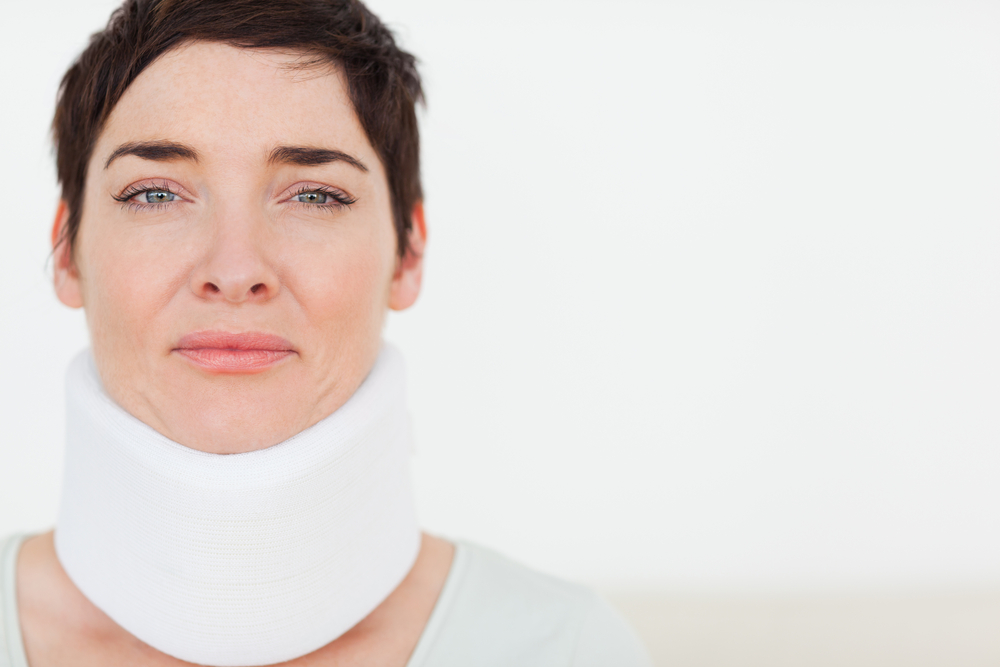
A cervical sprain can occur in one or more of the soft tissues of the cervical region of the spine when a sudden movement, such as a car accident or a hard fall, causes the neck to bend or twist at an extreme position, which is more commonly known as whiplash. It is an injury caused by the neck moving (or whipping) rapidly back and forth.
The term “whiplash” was first coined by Harold Crowe in 1928 to define acceleration-deceleration injuries occurring to the cervical spine or neck region.
Pain from whiplash can be mild or severe, and discomfort does not always appear right away. An individual may not begin to experience symptoms until hours after the injury, or even the next day.
Anatomy of the neck
The seven cervical vertebrae of the spinal column in your neck are connected to each other by ligaments and muscles — strong bands of tissue that act like thick rubber bands. The muscles and ligaments help stabilize the bones, while intervertebral discs act as shock absorbers, cushioning the spine during movement.
Your cervical spine supports the weight of your head (average weight of 10 to 13 pounds). It also allows your head and neck to tilt forward (flexion), backward (extension), turn from side to side (rotation), or bend to one side (ear-to-shoulder/lateral flexion).
Symptoms of Cervical Sprain/Whiplash
A person with a neck sprain or whiplash may experience a wide range of possible symptoms, including:
- Pain, in the neck area that worsens with movement
- Pain that peaks a day or so after an injury, rather than immediately
- Muscle spasms and pain in the upper shoulder
- A headache located in the back of the head
- Increased irritability, fatigue, difficulty sleeping, and difficulty concentrating
- Numbness in an arm or hand
- Neck stiffness or decreased range of motion (side to side, up and down, and/or circular)
- Tingling or weakness in the arm
- Fatigue
- Dizziness
- Blurred vision
- Ringing in the ears (tinnitus)
- Sleep disturbances
- Irritability
- Difficulty concentrating
- Memory problems
Treatment of Cervical Sprain/Whiplash
Depending on the severity of the whiplash and the pain associated with it, treatments and modalities vary. Application of heat, ice, massage, gentle stretches (chin tucks), anti-inflammatories, use of a TENS unit and rest can all be useful for mild to moderate cases of cervical sprain. For more severe cases, a doctor may prescribe physical therapy, a neck brace or a referral to a specialist.
Our chiropractors at Vaida recommend using a cervical neck rest, which can be beneficial to use after a whiplash injury to support the cervical spine and prevent further injury. It also helps to restore proper cervical curvature and reduce overall neck and shoulder tension that may result following cervical sprain/whiplash.
How Chiropractic Care Can Help in Recovery From Cervical Sprain/Whiplash
At Vaida Wellness Center, treatment for cervical sprains/whiplash addresses the tissues, joints, and bony structures involved. Manual therapy can be utilized to ease any muscle spasms. Adjustments are done to realign the cervical spine and all other spinal areas to encourage proper and optimal movement and help individuals get back to their full range of motion and daily activities.
If you have experienced a cervical sprain/whiplash, give us a call or schedule an appointment via our online scheduler. Dr. Lydia and Dr. Rachael would love to support you as part of your healing journey.
